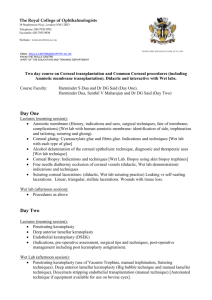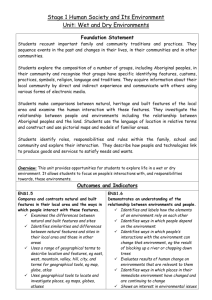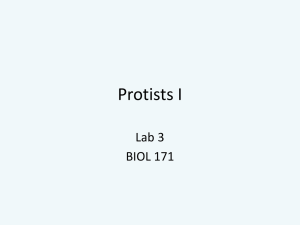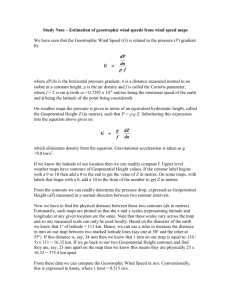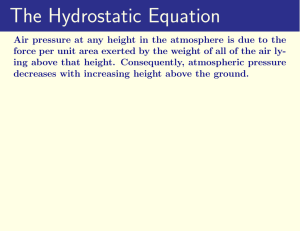Gruel-hydroclimate p..
advertisement
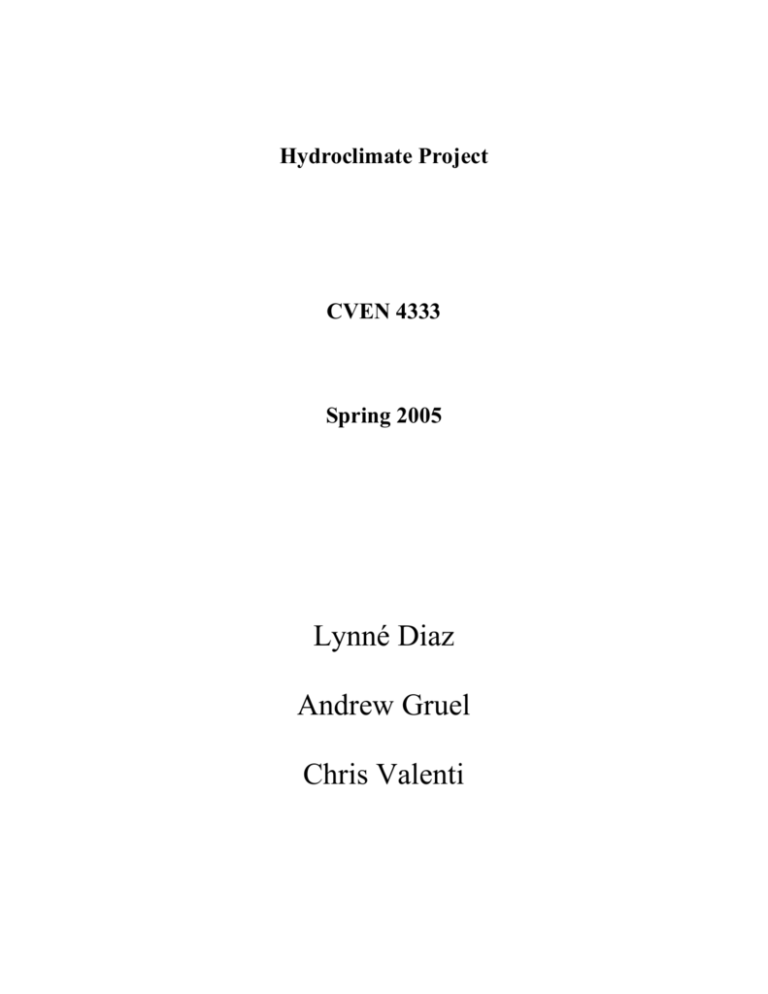
Hydroclimate Project CVEN 4333 Spring 2005 Lynné Diaz Andrew Gruel Chris Valenti I. Watershed The selected watershed is the Colorado River near the Grand Canyon in Arizona. The specific streamflow gage site is USGS #09402500 Lower Colorado-Marble Canyon. This scenic river is used yearround for recreational purposes such as boating and fishing. In addition, beyond this point the Colorado brings water to millions of users in Arizona, Nevada, California, and Mexico. Because of this heavy reliance on the river by so many, it would be useful to determine the conditions that contribute to heavy flows and the conditions that contribute to low flows. II. Data sets Streamflow data for the selected streamflow gage were obtained from the USGS website (http://water.usgs.gov/). Monthly streamflow amounts were acquired for the years 1950 through September 2003. A mean monthly streamflow for the range is shown in Figure 1. 25000 20000 15000 10000 5000 0 0 1 2 3 4 5 6 7 8 9 10 11 12 13 Figure 1. Mean monthly streamflow for years 1950-2003. Months 5, 6, and 7 (February, March, and April) correspond to the highest flow months. Climate division precipitation and temperature data were obtained from the Climate Diagnostics Center of NOAA. From Figure 1, the peak season of interest was determined to be winter/early spring, corresponding to February, March, and April. A plot of the yearly total streamflows for those months is shown in Figure 2. Total streamflows for season of Feb, Mar, and April 80000 70000 Seasonal Flow (cfs) 60000 50000 40000 30000 20000 10000 0 1950 1960 1970 1980 1990 2000 Year Figure 2. Total streamflows for season of interest (January, February, March) From Figure 2, six years (1954, 1955, 1959, 1961, 1963, and 1964) were chosen as ‘dry years’. Similarly, six years (1984, 1985, 1986, 1987, 1997, 1998) were chosen as ‘wet years’. III. Analysis Analysis of large-scale climate variables was performed to determine their influence on the variability of the streamflow. Graphs of this analysis are shown in Figures 3-8. It is important to first note that the river that we chose drains water from a large area of land, including Colorado, Utah, and Arizona, and so changes in climate over this large area will affect streamflow. SEA SURFACE TEMPERATURE Figure 3 shows the sea surface temperature for the dry years, and Figure 4 shows the sea surface temperature for the wet years. For analysis, it is helpful to compare the two figures side-by-side. In the wet years, there was clearly a higher average surface temperature in the Pacific Ocean. In cold years, the ocean is also at a more uniform temperature; in contrast, wet years show greater variation in temperature. Wet years are wet because the ocean is warmer, and more water is evaporated to become rain. In dry years, the ocean is cooler and so less evaporation occurs which leads to less precipitation. Figure 3. SST for dry years. Figure 4. SST for wet years. VECTOR WIND Figure 5 shows the vector wind for dry years, and Figure 6 shows the vector wind for wet years. Again, side-by-side analysis evinces the difference between the two. Dry years show much lower winds, and their general direction over the Pacific is toward the south. In contrast, in wet years, the wind travels in two directions: toward the east in the north, and toward the west in the south. Additionally, wet years have much stronger winds across the US. In wet years, the winds over the area where our measured streamflow begins are generally east-to-west; contrastingly, dry years show a north-to-south general wind direction over the area of interest. Wet years show an interesting cycle effect, as strong winds blow in a giant circle over Canada and the U.S., which would continually recycle water back toward the watershed of interest. Figure 5. Vector wind for dry years. Figure 6. Vector wind for wet years. GEOPOTENTIAL HEIGHT Figure 7 shows the geopotential height for the dry years, and Figure 8 shows it for the wet years. Geopotential height approximates the actual height of a pressure surface above mean sea level. Therefore, a geopotential height observation represents the height of the pressure surface on which the observation was taken. A line drawn on a weather map connecting points of equal height (in meters) is called a height contour. That means that at every point along a given contour, the values of geopotential height are the same. In the dry years, there is clearly a lower geopotential height over the majority of North America. Also, in the dry years, there is a vastly higher geopotential height over the Pacific. In contrast, in the wet years, the geopotential height is at its highest over the center of Canada, and in the Pacific there is a lower geopotential height reading. From these figures, it is clear that a lower geopotential height leads to drier years. Figure 7. z500 m geopotential height for dry years. Figure 8. Geopotential height for wet years. IV. Summary When Figures 3-8 are analyzed side-by-side, large-scale climate differences become obvious between dry and wet years. Dry years have cooler oceans, lighter north-to-south winds and lower geopotential height. In contrast, wet years have warmer oceans, stronger east-to-west winds and higher geopotential height. Because millions of people in the arid Southwest rely on the flows from this section of the Colorado for drinking, agriculture, and other uses, it is useful to understand what conditions make for wet or dry years. Although man cannot modify the large-scale variables, it is nevertheless important to understand how they work and what effects they have. Since we can’t change or predict the weather, the best we can do is to understand why it behaved the way it did. Lynne Diaz Andrew Gruel Chris Valenti




